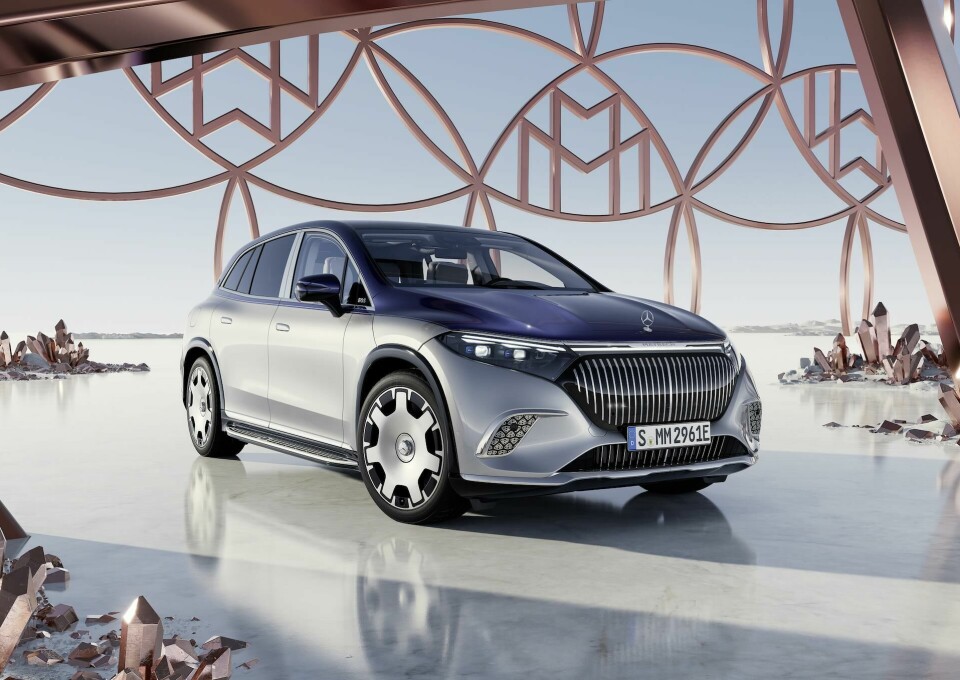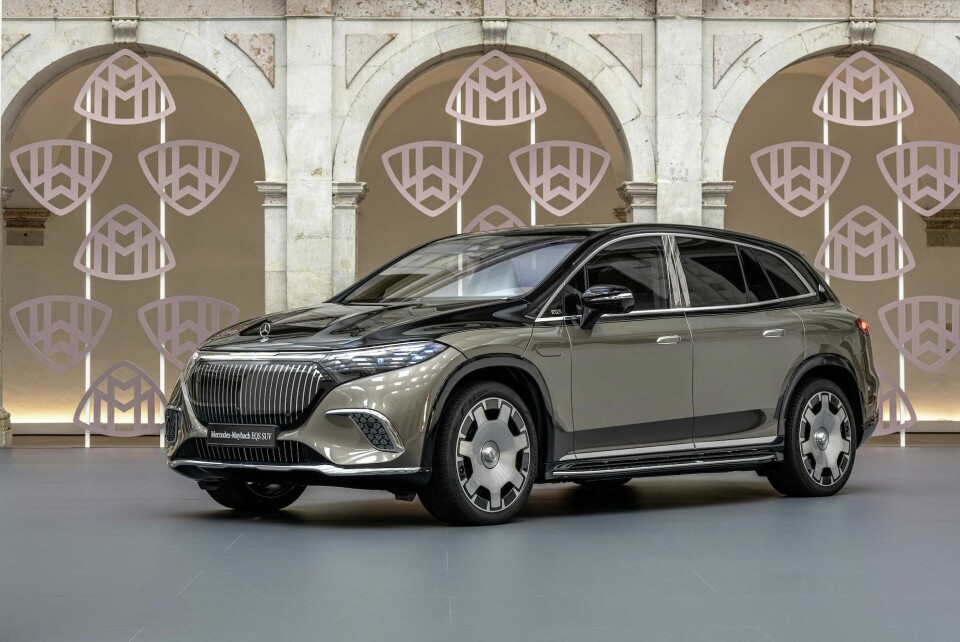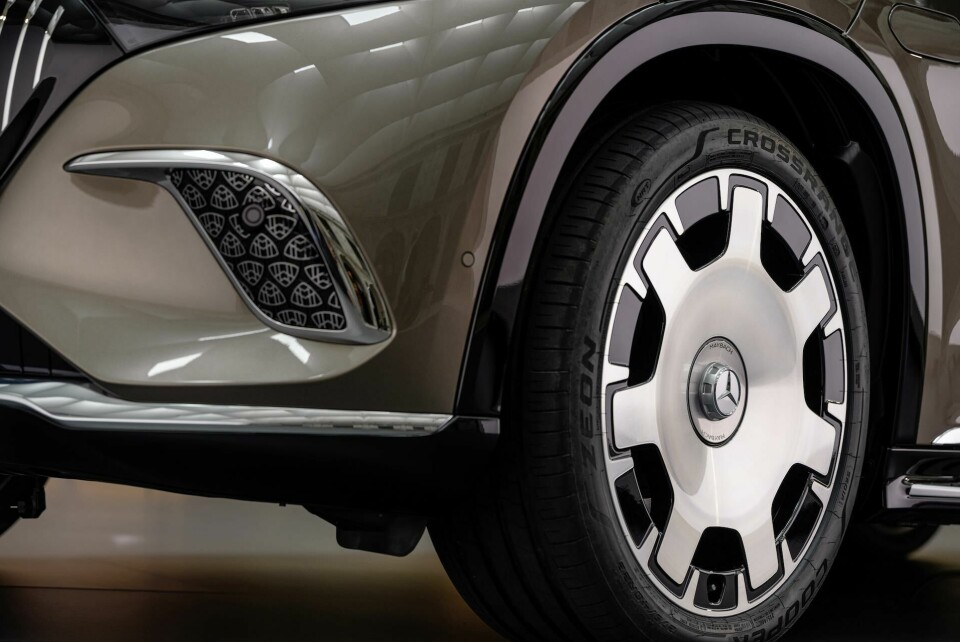
Mercedes-Maybach EQS SUV underscores the future of electric luxury
Mercedes-Benz design chief Gorden Wagener tells CDN correspondent Laura Burstein “it’s only natural” for the storied sub-brand to go electric
Once a standalone marque that took aim at the likes of Bentley and Rolls Royce, Maybach has traded its signature burly combustion engines for electric motors in the new Mercedes-Maybach EQS SUV.
Officially unveiled at the Shanghai motor show, the Mercedes-Maybach EQS 680 SUV is the production version of the concept we saw in 2021 at the IAA in Munich. Based on Mercedes’ EQS SUV, the new model loses some of its show-car wow factor (and gains that tiny door on the driver’s-side front quarter panel, created solely for windshield washer fluid), but retains many of its signature design cues and extravagant colour and trim treatments.

“For Maybach, we developed a distinctive design philosophy we call ‘Sophisticated Luxury,” chief design officer Gorden Wagener told us in an exclusive interview. “We strive to add the shine of the extraordinary to the beautiful. Maybach luxury is something very rare, desirable, and something that customers want and want to afford.”
Since 2014, Mercedes-Benz has designed Maybach versions of the flagship S-Class sedan, and more recently the GLS SUV. But the brand’s history is much more than premium materials and fancy badges. The original Maybach was founded in 1909 by Wilhelm Maybach, a German engineer who spent his earlier years working with Gottlieb Daimler on some of the industry’s early notable inventions, including the “grandfather clock” engine in 1885 and the Daimler-Mercedes 35 hp completed in 1902.
By some reports, Maybach was known in France as the “King of Designers.” He later struck out on his own manufacturing zeppelin engines, followed by the large luxury cars that bore his name. (And not to see Maybach through too much rosy-coloured glass, he was also responsible for the majority of engines used in German tanks in World War II).
The large black panel is closed for the first time
In 1960, Maybach’s company was acquired by Daimler-Benz, but it wasn’t until the late 1990s and early 2000s that Mercedes resurrected the Maybach name as an ultra-luxurious spinoff, with a small lineup of executive limousines, powered by hefty V12 engines and even heftier price tags (starting in the US at around $350,000). After nearly a decade, lagging sales prompted Mercedes to halt Maybach production, but later re-launched the name in 2014 as a top-of-the-line trim level of sorts for the S-Class saloon.
Now, the EQS 680 SUV becomes the first of Mercedes’ EQ lineup to get a Maybach badge. Ahead of its public debut, we got a sneak peek of the car at a technology briefing in Silicon Valley. Maybach is known for extravagance, so unsurprisingly, there’s nothing subtle about the execution. On the exterior, the brand’s logo is splashed everywhere from the tiny etchings in the headlamp assembly to the elaborate puddle lamps. Wagener points out some key Maybach design elements, such as the two-tone paint scheme with plenty of bright work.
“The front is characterised by the brand-typical black panel with vertical, chrome-plated trim strips in a three-dimensional depth look – we call it the Maybach pinstripe grille,” he says. And while some brands show — or even celebrate — the technology behind the front face, Mercedes-Maybach designers choose to conceal it. “The large black panel is closed for the first time, with the high-tech element for the radar sensors fully integrated and no longer visible,” Wagener explains. The car also gets Maybach-specific, 21- and 22-inch wheel designs.

“We wanted to create a cocooning effect in the interior,” Wagener explains. On the car we saw, rich open-pore wood is inlaid with Maybach’s familiar “flowing lines” pattern, echoing the pin-striping of the front grille design. Rear seats are fitted with Maybach’s signature pillowy headrests and a champagne cooler with silver flutes. The interior also uses vegetable-tanned leather, a first for any Mercedes production vehicle.
As expected, there are Maybach logos at every turn, from first read to fourth. Wagener points out the surrounds for the round instruments done in rose gold — also typical of the brand. “The design of the interior consistently follows the Maybach credo, ’What is good must also be beautiful,’” he says. Wagener also notes the designer lamps inspired by Bauhaus, integrated into each of the C-pillars.
Mercedes’ massive Hyperscreen comes standard, for which UX designers created Maybach-specific start-up animations on all three displays. The vehicle is also fitted with a stellar 15-speaker Burmeister sound system with Dolby Atmos capability. We got a demo of a similar setup on the Mercedes-Maybach S-Class sedan at South by Southwest in Austin shortly before this car broke cover, and can only imagine how it will sound in the nearly-silent cabin of an EV.
Wagener tells us that despite the brand’s exclusivity, there is no dedicated design team for Maybach models. “My teams work on all Mercedes brands, and all disciplines contributed to the Mercedes-Maybach EQS SUV,” he says. “It’s always great and inspiring teamwork.”
It was only natural to go electric now
As for the tech specs, the Mercedes-Maybach EQS 680 SUV gets its progenitor’s dual-motor power train with an output of 484 kW and a projected range of up to 600 miles. Pricing hasn’t been announced, but most expect the car to start somewhere in the neighbourhood of US$200,000 (for comparison, the current Mercedes-Maybach GLS 600 SUV starts at $170,000 and can exceed $200k with all the boxes ticked).
The very existence of the Mercedes-Maybach EQS SUV further underscores the dramatic transformation of the luxury segment over just a handful of years. Once a predominantly American trend, SUVs are usurping flagship saloons across major markets worldwide. And with the push toward electrification in even the most upper echelons of the industry, soon the days will be gone when status is proportionate to the number of cylinders under the bonnet.
It’s also ironic, given Maybach’s historic inseparability from combustion engines. But Wagener insists the move is on-brand. “Maybach has stood for innovation and technical progress for over 100 years,” he says. “It was only natural to go electric now.”



























